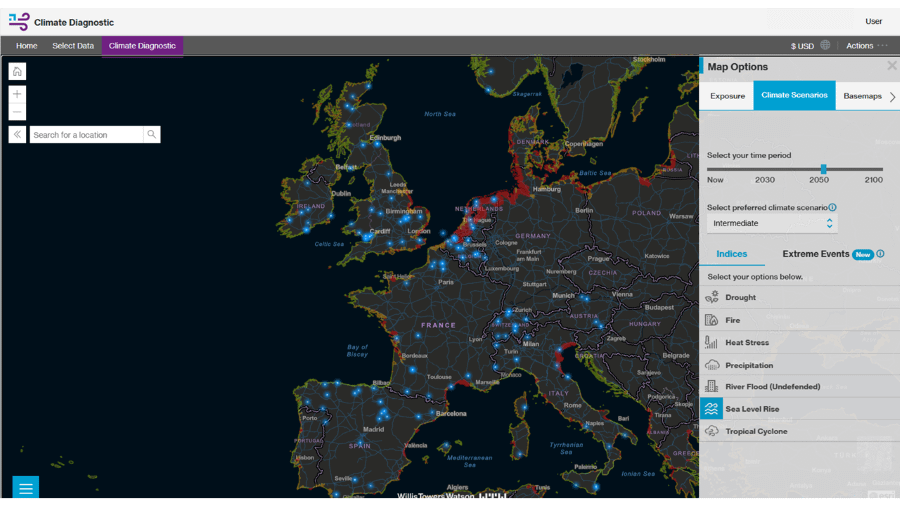Managing the physical risks of climate change, such as extreme flooding, wildfire weather and hurricanes, means identifying those risks mostly likely to impact your business, your supply chain partners and your customers.
Effective physical climate risk management also demands you can quantify these exposures. With accurate climate risk quantification comes more effective and efficient mitigation and adaption strategies, which deliver business value while enabling compliance with evolving climate reporting obligations.
Find a smarter way to more effective and efficient climate risk management and reporting with climate risk analytics from Climate Diagnostic.
Using industry-recognized models and the latest scientific projections, the platform gives you access to climate risk analytics that evaluate the specific exposures of your global assets to climate change, as well as those of your partners and customers.
With valuable, actionable and dynamic physical climate risk analytics, you can deliver climate risk management that’s more targeted, effective and more closely aligned with your evolving climate reporting disclosures.
How can Climate Diagnostic help you deliver smarter physical climate risk management and sustainability strategy?
More effective and efficient climate risk management – Get actionable risk views of your global assets that predict the impacts of a wide range of physical climate risks in alternative climate scenarios and over shorter, medium and longer-term time horizons
Strengthen portfolio resiliency – Identify which assets or properties have the highest physical risk now and decades into the future to prioritize climate risk mitigation and adaptation measures
Align with regulator and stakeholder climate reporting expectations – Respond to evolving climate reporting requirements with multifaceted and dynamic physical climate risk analytics
How Climate Diagnostic helps you find a smarter way to physical climate risk management – Key features
Climate Diagnostic offers wide-ranging functionalities and flexible features:
- Shows the exposure to acute physical climate risks (those arising from changes in event-driven hazards, such as hurricanes and extreme flooding) and chronic physical climate risks (those driven by longer-term shifts in climate patterns, such as heat stress, sea-level rise, precipitation and wildfire weather) under multiple climate scenarios
- Assess both acute and chronic climate risks over shorter and longer-term views, evaluating your global exposures over time horizons to 2030, 2050 and to 2100
- Explore risks via an atlas of interactive maps to see climate risk projections for your locations and individual assets across the globe, with physical climate risk scorecards at location level, comparing current versus future climate risk by asset location as required
- Adapt your climate view by both by time horizon and by climate scenario to project your exposure for the latest Shared Socioeconomic Pathways (SSP/RCP) 2.6, 4.5 and 8.5, the scientific standard climate projection scenarios, based on greenhouse gas concentration
- Generate executive summaries and dynamic risk dashboards, plus downloadable reports, making it easier to articulate and agree on climate risk management priorities with multiple stakeholders
- Available via WTW’s Risk IQ platform, giving you climate risk analytics directly and on-demand.















